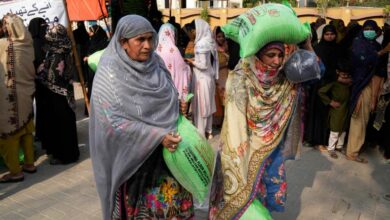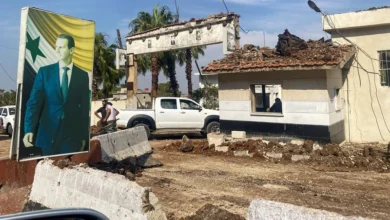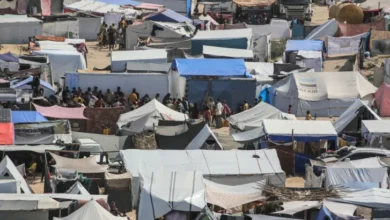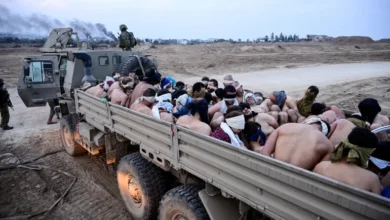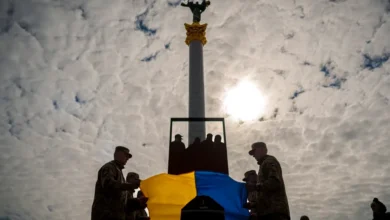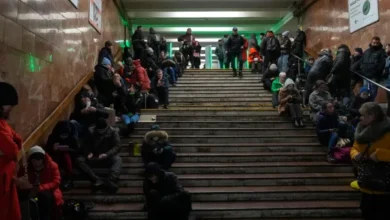Year of war in Ukraine left developing nations picking up pieces
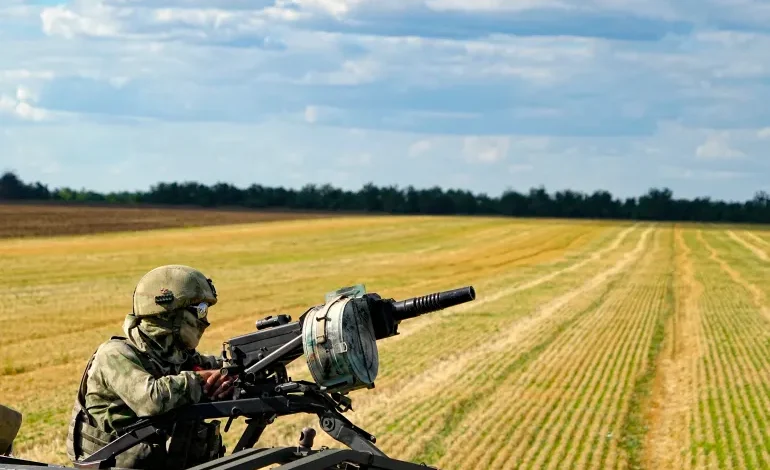
February 24th will mark one year since Russian tanks rolled into Ukraine in what was the start of Moscow’s full-blown invasion of its neighbour. Though Ukraine has, remarkably, survived as a sovereign state, it continues to suffer from round-the-clock artillery bombardment.
But in addition to the thousands of civilian deaths, millions of refugees and extensive infrastructure damage in Ukraine, countries far beyond its borders are feeling the detrimental effects of the war.
As a second-order effect of Russia’s invasion, tens of countries’ currencies cratered against the United States dollar in 2022, which raised the cost of imports.
Luc Verfaille, who owns a home appliance company in Cape Town, South Africa, told Al Jazeera that “to absorb the higher expenses from rand [South Africa’s currency] depreciation, we had to cut our overheads, including on staff”.
Given the complex interplay between geopolitics, commodity prices and financial markets, Russia’s invasion sent shockwaves across the global economy, including developing countries. Admittedly, the implications both within and between developing nations have varied. However, there have been some common challenges, including from higher commodity prices.
Even before the war, the global recovery from COVID-19 galvanised the market for commodities. Pent-up demand from national lockdowns and colossal economic stimulus programmes spurred rapid price gains. These trends were amplified by the war.
The energy component of the S&P Goldman Sachs Commodity Index, for instance, ended 2022 10 percent higher than what it was at the start of the year. Between January and June, it climbed by 68 percent. Given Russia’s key energy market status in 2021 — accounting for 14 percent and 18 percent of global oil and gas production, respectively — the war triggered uncertainty over constrained supplies.
But Russia’s hydrocarbon output has been largely unaffected by the military conflict and the ratcheting up of sanctions have, so far, had a muted effect on Russia’s “resilient” energy supplies, according to the International Energy Agency. For the most part, Moscow has managed to reroute European pipeline exports to emerging market countries like India, China and Turkey — albeit at discounts relative to market prices.
Across the European Union, meanwhile, gas flows from Russia fell by 80 percent between May and October. Pipeline constraints threatened swathes of energy-intensive industries, and European countries resorted to liquified natural gas (LNG) to keep factories from shutting.
Energy and food importers dealt a blow
Europe’s scramble for new LNG supplies triggered price rises in the immediate delivery (or spot) market. The benchmark spot price for Asian LNG reached a record high last year, leaving numerous developing countries in the region exposed to power shortages.Energy importers Pakistan and Bangladesh have been “hanging on, but can’t afford to pay as much on spot cargoes as wealthy European nations”, said Marcello Estevao, the global director of macroeconomics, trade and investment at the World Bank.
Though estimates vary, Pakistan’s international reserve position may be sufficient to cover just three weeks of energy imports at current prices.
“On the one hand, energy-importing countries have been caught out. Some will probably be forced into austerity,” Estevao added. “On the other hand, hydrocarbon exporters in the Middle East and Africa received a boost from higher energy prices … Especially those with spare capacity to raise production.”
For some energy exporters, like Nigeria and Angola, higher oil prices were partially offset by the increased costs of maintaining expensive petrol subsidies. Clearly, oil importers with petrol subsidies in place, such as Kenya and Ethiopia, fared even worse.
Similar strains have surfaced in countries with large food subsidy programmes. Before the war, Russia and Ukraine were among the world’s top suppliers of barley, maize and sunflower. Supply of these and other staples were critically affected by Russia’s invasion.
The two countries accounted for almost 30 percent of global wheat exports in 2021. But owing to Russia’s blockade of Ukraine’s Black Sea ports, a major shipping route for grains, wheat prices rose by 35 percent in 2022 from the previous year, reaching a record high in March.
Countries like Tunisia, Morocco and Egypt — one of the world’s largest importers of wheat — were badly hit. Roughly two-thirds of Egypt’s population receive five loaves of bread, known as eish baladi, every day, costing them just $0.5 a month, well below market costs. The difference is covered by a bread subsidy programme, which cost the government $2.8bn last year.
Last June, Egypt’s finance minister noted that elevated wheat prices would raise the cost of the country’s bread subsidy program by $1.5bn in 2022-23. Groaning under the weight of expensive food programmes, the government was recently forced into accepting a $3bn loan from the International Monetary Fund (IMF).

